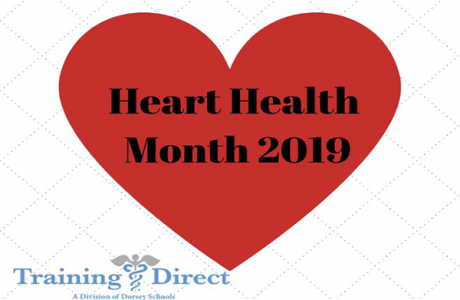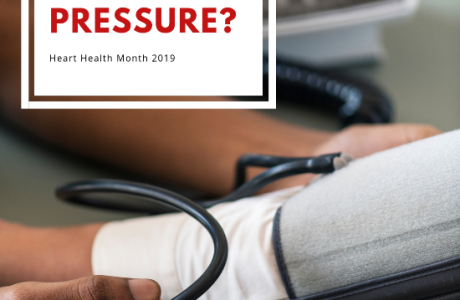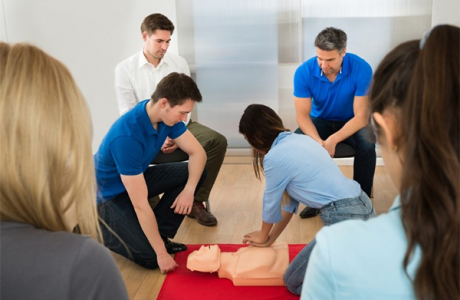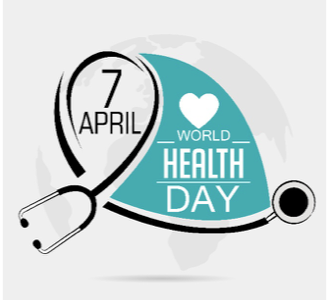
Since February is Heart Health Month, it’s only fitting that we take time to discuss the basics about blood pressure, which is paramount when it comes to maintaining your heart health. In our blog today, we break down some of the basics about blood pressure to give you a better idea of how you can be more informed about YOUR blood pressure and your heart health.
What is blood pressure?
Blood pressure is defined as the pressure of the blood against the inner walls of the blood vessels, varying in different parts of the body during different phases of contraction of the heart and under different conditions of health, exertion, etc. a
Why is managing a healthy blood pressure important?
 Managing a healthy blood pressure is important because having high blood pressure can present serious consequences to your heart health. According to the American Heart Association, roughly 80 million U.S. adults have been diagnosed with high blood pressure. b Left untreated, high blood pressure can damage and scar your arteries. High blood pressure can also cause several other problems, such as vascular weakness, increased risk of blood clots, increased plaque build-up, tissue and organ damage from arteries that have become narrowed and/or blocked, and increased workload on the circulatory system. c
Managing a healthy blood pressure is important because having high blood pressure can present serious consequences to your heart health. According to the American Heart Association, roughly 80 million U.S. adults have been diagnosed with high blood pressure. b Left untreated, high blood pressure can damage and scar your arteries. High blood pressure can also cause several other problems, such as vascular weakness, increased risk of blood clots, increased plaque build-up, tissue and organ damage from arteries that have become narrowed and/or blocked, and increased workload on the circulatory system. c
What is a “normal” blood pressure?
The American Heart Association recommends that a normal or a healthy blood pressure be less than 120 for Systolic (top number) and less than 80 for Diastolic (bottom number). The chart below (from the AHA) can be helpful in determining which category your blood pressure currently resides. d

What is the difference between the top and the bottom number in blood pressure?
Blood pressure is recorded as two numbers; a top number (Systolic) and a bottom number (Diastolic). Systolic measures the pressure in the arteries when the heart beats (when the heart muscle is contracting). Systolic is also the larger number between the two. Diastolic measures the pressure in one’s arteries between heartbeats (when the heart is resting between beats and refilling with blood). d
About Training Direct
Training Direct operates two campuses in Connecticut:
While specific training programs will vary by campus, Training Direct offers the following:
- Nurse Aide
- Phlebotomy Technician
- Medical Billing and Coding Specialist
- Patient Care Technician
- EKG Technician
- Electronic Medical Records
Michigan Academy of Emergency Services and Allied Health is a Division of Dorsey Schools.
About Dorsey Schools
Dorsey Schools are postsecondary institutions that provide short term comprehensive training to prepare students for promising career opportunities in various fields. Dorsey offers cosmetology training, culinary arts training, skilled trades training, and medical training programs for various allied health fields.
Today Dorsey is proudly represented by thousands of successful graduates working in their chosen careers throughout Michigan, because employers know they can feel confident hiring a Dorsey graduate.
If you’d like to learn more about Dorsey Schools, you may visit us online at www.dorsey.edu. For more information about Dorsey Schools’ graduation rates, the median debt of students who completed our programs, and other important information, please visit our website at www.dorsey.edu/disclosures.
Sources:
a http://dictionary.reference.com/browse/blood-pressure b http://www.heart.org/HEARTORG/Conditions/HighBloodPressure/AboutHighBloodPressure/About-High-Blood-Pressure_UCM_002050_Article.jsp#.VrNydHnltD_ c http://www.heart.org/HEARTORG/Conditions/HighBloodPressure/AboutHighBloodPressure/What-is-High-Blood-Pressure_UCM_301759_Article.jsp#.VrNwZnnltD8 dhttp://www.heart.org/HEARTORG/Conditions/HighBloodPressure/AboutHighBloodPressure/Understanding-Blood-Pressure-Readings_UCM_301764_Article.jsp#.VrNzbnnltD8





